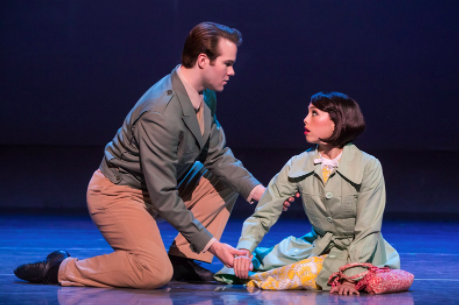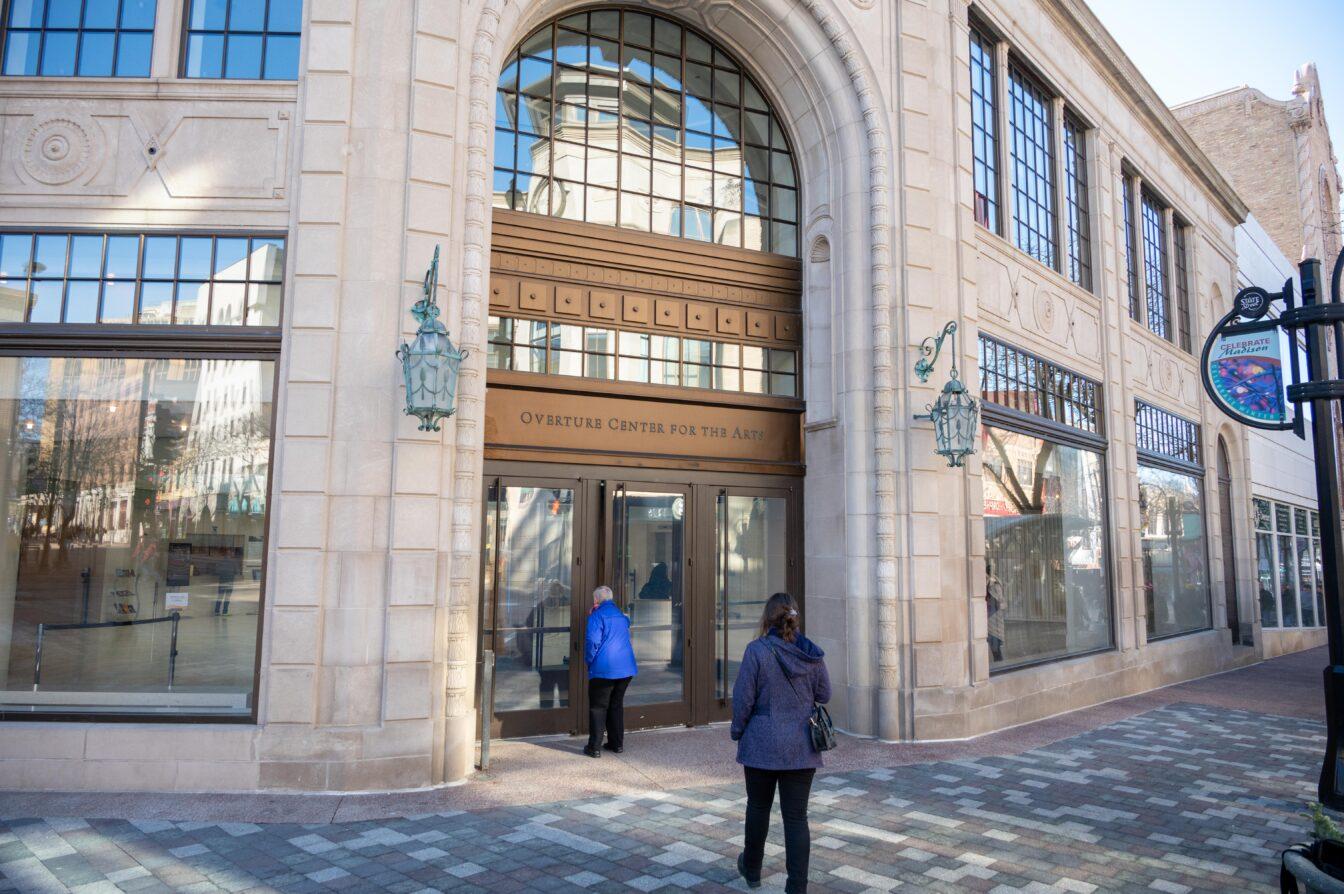“An American In Paris” debut at the Overture Center was a vivid, complex adventure that rewarded its audience’s attention.
A startling reminder of my own inflexibility, “An American in Paris” concluded its run at the Overture Center on March 4, while dazzling the audience in a spectacular exposition of dance and song. With a cast comprising of nothing but triple threats and impeccable visuals, it accomplishes the act of bringing its stage to life in a way not many musicals can.
“An American in Paris” tells the tale of Jerry Mulligan, a soldier in post-war Paris, who finds himself entangled in an ever-elusive love quadrilateral as he pines for a timid Parisian.
The adage goes, “You’ll laugh, you’ll cry.” And this show holds true to it — while this show is often flashy, vivacious, upbeat and just plain goofy, it often catches you off guard with poignancy and deeply emotional scenes.
‘I Wanna Go To Bed’ paints the story of heartbreak, self-sacrifice in relationships
While Matthew Scott’s portrayal of the hilariously awkward Adam Hochberg is endearing — and his physical comedy is a rare treasure that highlights the show’s levity — the show often takes sharp twists and turns down a road of emotional turbulence.
McGee Maddox’s Jerry Mulligan is a fantastic commentary on the American culture of persistence that exists in romance and proves itself an anomaly in the show. The clash between McGee’s standardly American tenacity and Allison Walsh’s lack thereof as Lise Dassin creates a strange, novel dynamic onstage.
Dynamic performance of ‘Rose Gold’ strikes UW stage, paints vivid narrative of black motherhood
As stereotypical behaviors emerge from within characters, it begins to become apparent that this is entirely intentional, and allows the audience’s expectations of each character to be fulfilled. The show brings out these stereotypes to reinforce as well as subvert them — whether for better or worse.
Make no mistake, though. The cast’s renditions of their respective characters are magnetic. Each cast member brings zest and wonder into the troupe becoming nothing short of a dream team. Kirsten Scott’s performance as Milo Davenport, a rich American heiress, really personifies the weird in the show. Her flaunted eccentricity is expressed via bright colors and stage pieces that bring to life the emphasis on art that the City of Light has always maintained.
There is another option: ‘Circle Up’ shares power of restorative justice
The chemistry between actors on stage is electric and complex. The three musketeers of the show, McGee Maddox’s Jerry Mulligan, Matthew Scott’s Adam Hochberg and Ben Michael’s Henri Baurel, demonstrate the inner workings of a complex group of friends in a way that shows how contrasting personalities can create strife and camaraderie alike.
Ben Michael’s Henri Baurel offers what is perhaps one of the most dynamic and compelling performances of the show. Michael’s ability to play an anxious, faltering character that blossoms into confidence incarnated in his performance in “I’ll Build a Stairway to Paradise” defines his impressive emotional range as an actor.
A sample of their dialogue includes:
“Why aren’t you free?”
“Because life is not like your American movies.”
The show’s culture-clash comments on themes of duty and what it means to truly be in love. The absolute range of characters and cultures presented in the show provides a number of insights to be made by its viewers, and its emotion in the show never supersedes its farcical nature, nor vice versa.
Dramatic irony abounds, providing no shortage of moments that demand the audience’s utmost attention. One scene in particular even provides a meta dance performance, the many moving parts of the show make it easy to get bogged down in the details. That’s not a bad thing, however.
The attention to detail obviously put forth into this show not only requires the audience’s attention, it demands it. When the entire company of interwoven characters enters the stage, the cast displays the group’s elaborate dynamics extremely well. As the three musketeers’ relationships with one another change, their attitudes are expressed in an organic, truly understandable way.
“An American in Paris” pushes the boundaries of what the medium of a stage can accomplish. By animating the backdrop stage, the show comes to life. Moving pieces, lights, colors and their creative applications — like turning ensemble members into expressionist paintings — are what make “An American in Paris” a truly magical experience.
The lighting and backdrops of the stage often give it three dimensions in a way that put me in awe. In one particular scene, the projected Parisian skyline shifts cinematically into a street in which a scene begins to take place.
Across many disciplines, artists at UW learn their craft, hone intents, form communities
Pieces of the stage become inherent parts of song and dance and directly contribute to the quality of the show. There’s a vast difference between a blackout after which a new scene has been created, and new stage pieces being danced, twirled and even scribbled onto the stage. It’s these exceptional transitions that define the show as one that kept my mouth agape more times than I’d like to admit.














